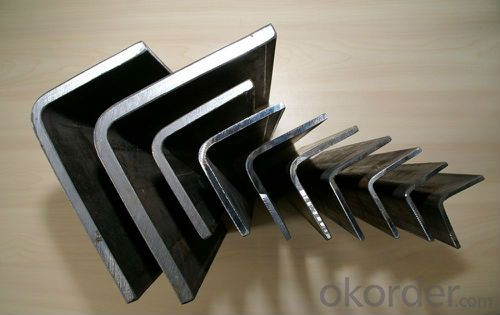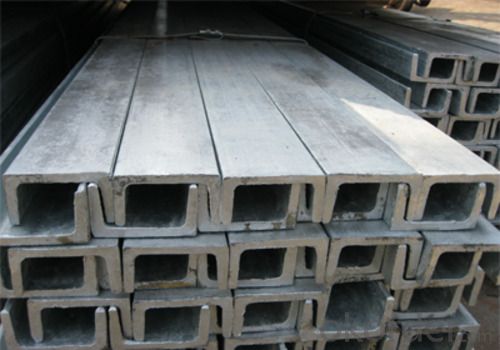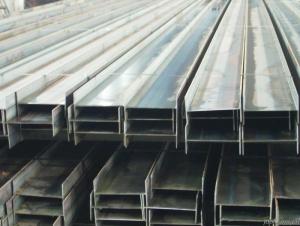CHANNEL ASTM A36 50MM-300MM OR JIS U CHANNEL
- Loading Port:
- China Main Port
- Payment Terms:
- TT or LC
- Min Order Qty:
- -
- Supply Capability:
- -
OKorder Service Pledge
OKorder Financial Service
You Might Also Like
Product Description:
OKorder is offering high quality CHANNEL ASTM A36 50MM-300MM OR JIS U CHANNELat great prices with worldwide shipping. Our supplier is a world-class manufacturer of steel, with our products utilized the world over. OKorder annually supplies products to European, North American and Asian markets. We provide quotations within 24 hours of receiving an inquiry and guarantee competitive prices.
Product Applications:
1.The JIS U Channel Steel can be devided into two kinds, namely common channel steel and light channel steel. The sizes of hot rolled common channel steel range from 5# to 40#. Meanwhile, the channel steel can be divided into cold forming sectional equal channel steel, cold forming sectional unequal channel steel, cold forming inner edge channel steel and outer edge channel steel.
2.The JIS u channel steel is usually used for arch-itechtural structure, and they could be welded in order to support or hang a vari-ety of facilities. They are also usually used in combination with I beam. The channel steel with sizes under 14# is usually applied to construction engineering, as purline, while the channel steel with sizes above 16# is more likely to be used in building vehicle chassis structure and mechanical structure. Furthermore, the channel steel in sizes above 30# are target at building bridge structure, as tension bar.
3.In a word, the channel steel must possess perfect welding property, riveting property and mechanical property and so on.
Product Advantages:
OKorder's CHANNEL ASTM A36 50MM-300MM OR JIS U CHANNELare durable, strong, and resist corrosion.
Main Product Features:
· Premium quality
· Prompt delivery & seaworthy packing (30 days after receiving deposit)
· Corrosion resistance
· Can be recycled and reused
· Mill test certification
· Professional Service
· Competitive pricing
Product Specifications:
Manufacture: Hot rolled
Grade: Q195 – 235
Certificates: ISO, SGS, BV, CIQ
Length: 6m – 12m, as per customer request
Packaging: Export packing, nude packing, bundled
Original Place | Tangshan, China | Brand Name | UINDA |
Standard | JIS G3192 : 1990 | ||
Material Grade | SS490 | ||
Sizes | 50mm to 200mm | ||
Sales Volume/Year | 3000MT | ||
Destination Area | Middle East, Africa, Southeast Asia | ||
2. The sections in details are as followings in the table-1
JIS U CHANNEL | Standard | Sectional | Dimension |
| Mass: |
| (mm) | (mm) | (mm) | (mm) |
|
50x25 | 50 | 25 | 3.0 | 6.00 | 2.37 |
75X40 | 75 | 40 | 3.8 | 7.00 | 5.30 |
75X40 | 75 | 40 | 4.0 | 7.00 | 5.60 |
75X40 | 75 | 40 | 4.5 | 7.00 | 5.85 |
75X40 | 75 | 40 | 5.0 | 7.00 | 6.92 |
|
|
|
|
|
|
100X50 | 100 | 50 | 3.8 | 6.00 | 7.30 |
100X50 | 100 | 50 | 4.2 | 6.00 | 8.03 |
100X50 | 100 | 50 | 4.5 | 7.50 | 8.97 |
100X50 | 100 | 50 | 5.0 | 7.50 | 9.36 |
|
|
|
|
|
|
125X65 | 125 | 65 | 5.2 | 6.80 | 11.66 |
125X65 | 125 | 65 | 5.3 | 6.80 | 12.17 |
125X65 | 125 | 65 | 5.5 | 8.00 | 12.91 |
125X65 | 125 | 65 | 6.0 | 8.00 | 13.40 |
|
|
|
|
|
|
150x75 | 150 | 75 | 5.5 | 7.30 | 14.66 |
150x75 | 150 | 75 | 5.7 | 10.00 | 16.71 |
150x75 | 150 | 75 | 6.0 | 10.00 | 17.90 |
150x75 | 150 | 75 | 6.5 | 10.00 | 18.60 |
150x75 | 150 | 75 | 6.5 | 10.00 | 24.00 |
|
|
|
|
|
|
200X80 | 200 | 80 | 7.5 | 11.00 | 24.60 |
3. The mechanical property of JIS U Channel Steel in the table-2:
Grade | Yield Strength,N/mm² | Extension Strength N/mm² | |||
Thickness of Steel,mm | |||||
≦16 | >16-≦40 | >40-≦100 | >100 | ||
SS490 | ≧285 | ≧275 | ≧255 | ≧245 | 490-610 |
4. The chemical composition of JIS U Channel Steel as per SS490 in the table-3
Grade | Element(%) | |||
C | Mn | P | S | |
SS490 | - | - | ≦0.050 | ≦0.050 |
FAQ:
Q1 What makes stainless steel stainless?
A1 Stainless steel must contain at least 10.5 % chromium. It is this element that reacts with the oxygen in the air to form a complex chrome-oxide surface layer that is invisible but strong enough to prevent further oxygen from "staining" (rusting) the surface. Higher levels of chromium and the addition of other alloying elements such as nickel and molybdenum enhance this surface layer and improve the corrosion resistance of the stainless material.
Q2 What makes stainless steel stainless?
A2 Stainless steel must contain at least 10.5 % chromium. It is this element that reacts with the oxygen in the air to form a complex chrome-oxide surface layer that is invisible but strong enough to prevent further oxygen from "staining" (rusting) the surface. Higher levels of chromium and the addition of other alloying elements such as nickel and molybdenum enhance this surface layer and improve the corrosion resistance of the stainless material.
Q3: The products are invoicing on theoritical weight or on actual weight?
A3: We can do it in both manners, according to the customers' request.


- Q:What are the different surface finishes available for steel channels?
- Steel channels offer a variety of surface finishes, each with its own advantages and uses. Some commonly used finishes include: 1. Hot-Dip Galvanized: This process involves immersing the steel channel in molten zinc, creating a protective coating. It is perfect for outdoor applications or environments with high humidity or chemical exposure due to its excellent corrosion resistance. 2. Powder Coating: By applying dry powder and heating it, a durable and protective layer is formed on the steel channel's surface. This finish comes in various colors and provides outstanding resistance to chipping, scratching, and fading. It is often used for decorative purposes or when aesthetics matter. 3. Electroplating: Through electrolysis, a layer of metal like chrome or nickel is deposited on the steel channel's surface. This finish enhances appearance, offers corrosion resistance, and can even improve hardness or wear resistance, depending on the plated metal. 4. Painted: Steel channels can be painted with different coatings like epoxy, acrylic, or enamel. Painting provides both a visually appealing look and protection against corrosion. The type of paint can be chosen based on factors like durability, weather resistance, and color options. 5. Stainless Steel: Steel channels can be made from stainless steel, which naturally resists corrosion. They are commonly used in applications where hygiene, high temperatures, or exposure to aggressive chemicals are concerns. The choice of surface finish for steel channels depends on specific requirements such as corrosion resistance, durability, aesthetics, and environmental factors. Seeking advice from a steel supplier or surface finishing expert can help determine the most suitable finish for a particular project.
- Q:What are the different methods of protecting steel channels from impact damage?
- There are various methods of protecting steel channels from impact damage, including installing protective barriers or bollards, using impact-resistant coatings or paints, implementing cushioning materials or padding, employing shock-absorbing devices or systems, and reinforcing the structure with additional supports or reinforcements.
- Q:Can steel channels be used for solar panel mounting?
- Yes, steel channels can be used for solar panel mounting. Steel channels provide a strong and durable option for mounting solar panels, as they are capable of supporting the weight of the panels and withstanding various weather conditions. Additionally, steel channels can be easily customized and adjusted to fit the specific requirements of the solar panel installation. They offer a secure foundation for the panels and can be installed on rooftops, ground mounts, or other structures. However, it is important to ensure that the steel channels are properly installed and anchored to provide the necessary stability for the solar panels.
- Q:How do steel channels contribute to energy efficiency?
- Steel channels can contribute to energy efficiency in several ways. Firstly, steel is a highly durable material that has a long lifespan, meaning that steel channels can provide structural support for buildings and infrastructure for many years without needing to be replaced. This reduces the need for energy-intensive repairs or replacements, thus saving energy in the long run. Secondly, steel channels can be used to create efficient building envelopes. Steel is a good thermal conductor, which means that it can help transfer heat or cold from one area to another. By incorporating steel channels into building designs, it is possible to create energy-efficient systems that can effectively distribute heat or cool air throughout the building, reducing the need for excessive heating or cooling. This can result in significant energy savings and lower utility bills. Furthermore, steel channels can also be utilized in renewable energy infrastructure. With the increasing focus on sustainable and clean energy sources, steel channels can be used to support solar panels or wind turbines, facilitating the generation of green energy. By enabling the installation of renewable energy systems, steel channels contribute to reducing the reliance on fossil fuels and decreasing greenhouse gas emissions, thereby enhancing overall energy efficiency. Lastly, steel channels can assist in the construction of energy-efficient transportation systems. Steel is a lightweight and strong material, making it ideal for manufacturing vehicles and railway systems. By using steel channels in the construction of transportation infrastructure, it is possible to reduce the weight of vehicles and improve fuel efficiency. Lighter vehicles require less energy to operate, resulting in reduced fuel consumption and lower emissions. In conclusion, steel channels contribute to energy efficiency by providing durable structural support, enabling efficient building envelopes, supporting renewable energy infrastructure, and facilitating the construction of energy-efficient transportation systems. By incorporating steel channels into various applications, we can optimize energy usage, lower energy consumption, and promote sustainability.
- Q:What are the connection methods for steel channels in construction?
- There are several connection methods used for steel channels in construction, depending on the specific application and structural requirements. One common method of connecting steel channels is by welding. This involves melting the edges of the channels together and allowing them to cool, creating a strong bond. Welding is often used when the channels need to withstand significant loads and forces. It provides a durable and permanent connection that is resistant to fatigue and corrosion. Another connection method is bolting. In this case, steel channels are joined together using bolts and nuts. Bolting is often preferred when the channels need to be easily disassembled or adjusted. It allows for flexibility in construction and can be quicker than welding. However, it may not be as strong as welded connections and may require regular maintenance to ensure the bolts remain tight. Riveting is another traditional method of connecting steel channels. It involves using metal rivets to hold the channels together. Riveting was commonly used in the past, but it has largely been replaced by welding and bolting due to advancements in technology and the ease of use provided by these methods. However, in certain situations where aesthetics or historical accuracy is important, riveting may still be used. Adhesive bonding is a modern method of connecting steel channels. It involves using high-strength adhesives to bond the channels together. Adhesive bonding is particularly useful when joining dissimilar materials or when a seamless appearance is desired. It can provide a strong and durable connection, but it may not be suitable for all applications and may require special surface preparation and curing time. Ultimately, the choice of connection method for steel channels in construction depends on several factors, including the specific structural requirements, budget constraints, time constraints, and aesthetic considerations. It is important to consider the advantages and disadvantages of each method and select the most appropriate one for the given project.
- Q:Can steel channels be used in framing systems?
- Yes, steel channels can be used in framing systems. Steel channels are commonly used in construction for their strength and durability. They can provide structural support and stability in framing systems, making them an excellent choice for various applications such as walls, roofs, and floors.
- Q:How do steel channels compare to other structural materials like wood or concrete?
- Steel channels have several advantages over other structural materials like wood or concrete. Firstly, steel channels have superior strength and durability compared to wood. Steel has a high tensile strength, meaning it can withstand heavy loads and pressures without bending or breaking. In contrast, wood is more susceptible to warping, rotting, and insect damage over time. Secondly, steel channels offer greater design flexibility and versatility compared to concrete. Steel can be easily shaped and molded into various sizes and dimensions, allowing for more intricate and complex designs. Concrete, on the other hand, requires formwork and curing time, limiting its aesthetic options. Additionally, steel channels have a higher fire resistance compared to both wood and concrete. Steel does not burn or contribute to the spread of flames, making it a safer choice for structural applications. Wood is highly flammable and can quickly ignite, while concrete may crack or spall under extreme heat. Furthermore, steel channels have a longer lifespan and require less maintenance compared to wood or concrete. Steel is resistant to weathering, corrosion, and pests, reducing the need for regular repairs or replacements. Wood and concrete, on the other hand, may require regular sealing, painting, or patching to prevent deterioration. Lastly, steel channels offer better sustainability and environmental benefits compared to wood or concrete. Steel is a highly recyclable material, and using recycled steel in construction reduces the need for new extraction. Additionally, steel structures can be disassembled and reused, minimizing waste. Wood requires harvesting of trees, which can contribute to deforestation, while concrete production has a significant carbon footprint. In summary, steel channels outperform wood and concrete in terms of strength, durability, design flexibility, fire resistance, lifespan, maintenance, and sustainability. These advantages make steel channels a preferred choice for various structural applications.
- Q:Can steel channels be galvanized?
- Yes, steel channels can be galvanized. Galvanization is a process of applying a protective zinc coating to steel to prevent rusting and corrosion. Galvanizing steel channels can provide long-lasting protection and can be done through either hot-dip galvanizing or electroplating methods. Hot-dip galvanizing involves immersing the steel channel in a bath of molten zinc, while electroplating involves using an electric current to deposit a layer of zinc onto the steel surface. Galvanized steel channels are commonly used in various industries, including construction, infrastructure, and manufacturing, due to their enhanced durability and resistance to environmental factors.
- Q:The telescopic arm is welded by channel steel and steel plate. Then the channel steel is inclined and the guide is not good enough. Is it a special profile? What are the telescopic arms?
- Steel welding steel mostly used as a beam or a column, the steel plate is relatively thick, and the channel has been forming calculation immunity anti disturbance capability is greatly improved, two only in the center position of weld line position, the formation of the moment theory on the bending of the analysis should be small and therefore, whether it is welding crack or welding deformation can better handle. In no case have to supply square, to be.
- Q:Can steel channels be used for electrical installations?
- Indeed, electrical installations can make use of steel channels. These steel channels, alternatively referred to as strut channels or C-channels, are frequently employed in electrical installations because of their durability and strength. They serve as a reliable framework for supporting and organizing electrical cables, conduits, and other electrical components. The design of steel channels allows for easy customization to cater to specific electrical needs, as they can be effortlessly cut, drilled, and modified. Furthermore, they offer exceptional protection against physical damage, rendering them suitable for both indoor and outdoor electrical installations. Moreover, steel channels possess grounding capabilities, which are crucial for electrical safety. In summary, due to their sturdiness, adaptability, and ability to comply with electrical code requirements, steel channels are a favored option for electrical installations.
1. Manufacturer Overview |
|
|---|---|
| Location | |
| Year Established | |
| Annual Output Value | |
| Main Markets | |
| Company Certifications | |
2. Manufacturer Certificates |
|
|---|---|
| a) Certification Name | |
| Range | |
| Reference | |
| Validity Period | |
3. Manufacturer Capability |
|
|---|---|
| a)Trade Capacity | |
| Nearest Port | |
| Export Percentage | |
| No.of Employees in Trade Department | |
| Language Spoken: | |
| b)Factory Information | |
| Factory Size: | |
| No. of Production Lines | |
| Contract Manufacturing | |
| Product Price Range | |
Send your message to us
CHANNEL ASTM A36 50MM-300MM OR JIS U CHANNEL
- Loading Port:
- China Main Port
- Payment Terms:
- TT or LC
- Min Order Qty:
- -
- Supply Capability:
- -
OKorder Service Pledge
OKorder Financial Service
Similar products
New products
Hot products
Related keywords





























